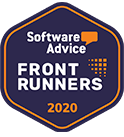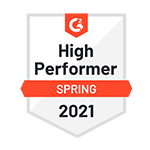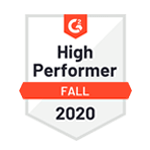
In today’s competitive job market, high volume recruitment poses a common challenge faced by organizations across industries. Due to a large number of open positions and a limited pool of qualified candidates, recruiters are under immense pressure to attract, assess, and hire the right talent. To address this challenge, effective strategies for streamlining the recruitment process, attracting top talent, and achieving hiring goals are crucial. Specifically, high volume recruitment refers to the process of hiring a large number of employees within a short period of time, typically for seasonal or temporary positions or for roles with high turnover rates. Therefore, in this article, we will provide you with insights into the best practices for high volume recruitment
Streamlining Your Recruitment Process:
It’s essential to understand the importance of streamlining your recruitment process. By doing so, you can ensure a faster and more efficient hiring process while attracting top talent. Here are the key strategies to consider:
Optimizing Your Job Postings
- Ensure that your job description accurately reflects the responsibilities and qualifications required for the position.
- Use clear and concise language to avoid confusion and misinterpretation.
- Incorporate relevant keywords to improve your search engine ranking and attract qualified candidates.
- Highlight any unique aspects of the position, such as opportunities for growth and development or a competitive salary.
- Use social media platforms like LinkedIn, Facebook, and Twitter to advertise open positions and reach a wider audience.
- Consider using paid advertising on social media platforms to target specific demographics and increase visibility.
- Use reputable job boards such as Indeed, Glassdoor, and Monster to reach a large pool of qualified candidates.
Automating Your Recruitment Process
- Use an applicant tracking system (ATS) to manage applications and streamline the recruitment process.
- Automate certain steps, such as sending rejection emails and scheduling interviews, to save time and improve efficiency.
- Consider using chatbots or other automation tools to answer frequently asked questions and provide a positive candidate experience.
Conducting Efficient Phone and Video Interviews
- Schedule interviews in advance to ensure that both the interviewer and candidate are prepared.
- Use a structured interview format with predefined questions to ensure consistency and avoid bias.
- Use video interviews to save time and money on travel costs while still maintaining a personal connection with candidates.
Implementing Pre-Employment Assessments
- Use pre-employment assessments to evaluate candidates’ skills, knowledge, and abilities.
- Choose assessments that are relevant to the position and aligned with your organization’s values.
- Ensure that assessments are administered consistently to avoid bias and ensure fairness.
By implementing these strategies, such as those mentioned previously, you can streamline your recruitment process and improve your chances of attracting and hiring top talent. In addition, it is important to continually evaluate and refine your process to ensure that it remains effective and efficient. By doing so, you can stay ahead of the competition and maintain a strong pipeline of qualified candidates. Therefore, in conclusion, high volume recruitment can be challenging, but by following best practices and adapting to changes in the market, you can achieve your hiring goals and build a successful team.
Attracting Top Talent
To attract top talent, companies need to focus on various factors that can influence candidates’ decisions. Some of the crucial aspects are employer branding, employee referrals, engaging with passive candidates, and providing a positive candidate experience. Let’s dive into each one in detail:
Employer branding and reputation
Employer branding is the process of creating a company’s image that appeals to potential employees. A strong employer brand can attract top talent, while a poor one can repel them. It includes everything from company culture, values, mission, work environment, employee benefits, and more. Companies need to establish a positive reputation through various channels like social media, online reviews, and word of mouth.
Employee referrals and incentivization
Employee referrals are an effective way of attracting top talent because they are more likely to trust their peers than a company’s advertisements. Companies can incentivize employees to refer their friends or acquaintances by offering rewards or bonuses. This strategy not only helps in attracting top talent but also improves employee retention.
Engaging with passive candidates
Passive candidates are those who are not actively looking for a job but can be interested in a better opportunity. Companies can engage with them through social media, networking events, or by sending personalized messages. Building relationships with passive candidates can create a talent pool for future job openings.
Providing a positive candidate experience
The candidate experience is the overall impression that a candidate has of the company’s recruitment process. A positive candidate experience can lead to a better perception of the company and increase the likelihood of accepting a job offer. It includes aspects like clear job descriptions, timely communication, respectful treatment, and a smooth hiring process.
Assessing Candidates Efficiently
Assessing candidates efficiently is the process of evaluating job applicants to identify the most suitable candidate for a particular job opening. It involves several steps, including identifying key skills and attributes required for the role, creating a structured interview process, conducting behavioral interviews, using data-driven assessment tools, and making informed hiring decisions.
Identifying the key skills and attributes
Identifying the key skills and attributes required for the role involves analyzing the job requirements, understanding the company culture, and identifying the necessary skills and qualifications for the job. This can help in drafting the job description and developing the selection criteria for the position.
Creating a structured interview process
Creating a structured interview process involves developing a consistent and standardized approach to conducting interviews. This includes defining the interview format, questions to be asked, and evaluation criteria. The structured interview process ensures that all candidates are evaluated using the same criteria, making it easier to compare and select the most qualified candidate.
Conducting behavioral interviews
Conducting behavioral interviews involves asking open-ended questions that require candidates to provide specific examples of their past behavior. This helps to assess the candidate’s skills, experience, and problem-solving abilities. Behavioral interviews are based on the belief that past behavior is a predictor of future performance.
Using data-driven assessment tools
Using data-driven assessment tools involves using various methods to evaluate candidate skills and competencies. These include skills tests, cognitive ability tests, personality tests, and situational judgment tests. Data-driven assessment tools provide objective and quantifiable data that can help in making informed hiring decisions.
Making informed hiring decisions
Making informed hiring decisions involves evaluating candidate qualifications, skills, experience, and fit with the company culture. It also involves considering other factors, such as salary expectations, availability, and references. Making informed hiring decisions is essential to ensure that the right candidate is selected for the job.
Onboarding and Retention Strategies
Onboarding and retention strategies are essential for building a strong and sustainable workforce. Therefore, developing a comprehensive onboarding program, providing ongoing training and development opportunities, fostering a positive work culture and employee engagement, and implementing retention strategies are crucial steps for retaining employees and reducing turnover.
Developing a comprehensive onboarding program
It involves creating a structured process that integrates new hires into the organization. It includes introducing the company’s culture, values, policies, and procedures. The onboarding process should help new hires feel welcome and valued while also providing them with the tools and resources needed to succeed in their new role.
Providing ongoing training and development opportunities
To ensure employee retention, providing ongoing training and development opportunities is an essential strategy. Firstly, providing opportunities for career development can motivate employees to pursue their goals and grow within the organization. Additionally, skill-building programs, such as workshops or online courses, can help employees develop new skills and stay up-to-date with industry trends. Mentoring programs, where experienced employees provide guidance and support to newer employees, can also be an effective way to promote learning and development. By offering ongoing training and development, employees stay engaged, motivated, and committed to the organization, leading to a more skilled and productive workforce. Ultimately, prioritizing training and development as part of your talent management strategy can help you retain top talent and achieve long-term success.
Fostering a positive work culture and employee engagement
To build a successful organization, it is important to foster a positive work culture and employee engagement. This involves creating an environment that supports employees’ physical and emotional well-being. One way to achieve this is by promoting work-life balance, such as through flexible scheduling and remote work options. Additionally, recognizing and rewarding employee achievements can increase motivation and morale. Providing opportunities for social interaction and team building, such as through company events or volunteer activities, can also contribute to a positive work culture and strong employee relationships. By fostering a positive work culture and employee engagement, higher job satisfaction and lower turnover can be achieved, benefiting both the employees and the organization. Therefore, prioritizing these factors can lead to a more productive and fulfilling workplace.
Implementing retention strategies to reduce turnover
When it comes to high volume recruitment, reducing turnover is crucial for building a strong and stable workforce. Implementing retention strategies involves identifying the factors that contribute to employee turnover and implementing strategies to address those factors. For instance, offering competitive compensation and benefits packages can incentivize employees to stay with the organization. Additionally, providing opportunities for career advancement can motivate employees to develop their skills and grow within the company. Creating a supportive work environment, such as through open communication and recognition programs, can also contribute to employee satisfaction and loyalty. Overall, retention strategies help to keep talented employees engaged and committed to the organization, reducing the need for frequent and costly recruitment efforts. Therefore, by prioritizing retention as a key component of your talent management strategy, you can build a strong and stable workforce that drives your organization’s success.
Conclusion
High volume recruitment can be challenging, but it can be successful with the right strategies. Streamlining recruitment can increase efficiency. Attracting top talent requires a targeted approach, such as social media and employee referrals. Assessing candidates efficiently can identify the best fit for each role. Onboarding and retention strategies, such as training and career development, can enhance engagement and reduce turnover. Focus on key skills, provide a positive candidate experience, and prioritize engagement and retention. With these strategies, you can build a thriving organization.
FAQs
Q: What is high volume recruitment?
A: High volume recruitment refers to the process of hiring a large number of candidates in a short period of time, typically for entry-level or lower-skilled positions.
Q: What are the challenges of high-volume recruitment?
A: Challenges of high-volume recruitment include managing a large number of applicants, ensuring a consistent and fair hiring process, and finding qualified candidates quickly.
Q: How can I streamline my recruitment process?
A: To streamline your recruitment process, you can automate tasks like resume screening and scheduling interviews, simplify your application process, and use data to identify areas for improvement.
Q: How can I attract top talent for high volume roles?
A: To attract top talent for high volume roles, you can optimize your job descriptions, leverage your employer brand, and offer competitive compensation and benefits.
Q: What are the best assessment strategies for high volume recruitment?
A: The best assessment strategies for high volume recruitment include using objective criteria to evaluate candidates, conducting virtual interviews, and using pre-employment tests and assessments.
Q: How can I improve onboarding and retention for high volume hires?
A: To improve onboarding and retention for high volume hires, you can provide clear job expectations and training, create a welcoming company culture, and offer opportunities for career growth and development.


























